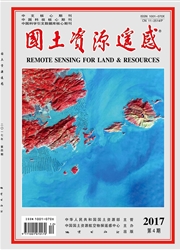

 中文摘要:
中文摘要:
介绍了一种长时间序列遥感影像预处理程序,即陆地卫星生态系统干扰自适应处理系统(landsat ecosystem disturbance adaptive processing system,LEDAPS)。该程序通过使用MODTRAN太阳能输出模型,校正太阳方位、日地距离、TM或ETM+带通以及太阳辐照度,将定标影像转换为表观(top-of-atmosphere,TOA)反射率影像,并将通过浓密植被(dark dense vegetation,DDV)算法插值生成的气溶胶光学厚度(aerosol optical thickness,AOT)以及通过相关资料获得的臭氧(O3)浓度、大气压及水汽值等用于6S辐射传输模型,生成地表反射率产品。以LEDAPS可处理的标准数据Landsat7ETM+和统一格式后的非标准数据Landsat5 TM影像为例,介绍了长时间(1987-2011年)序列数据的选择、格式统一以及算法的实现过程,同时给出了校正后影像效果评价的方法。结果表明,标准数据和非标准数据经过LEDAPS处理后生成的地表反射率产品能有效降低大气中O3、水汽及气溶胶等对影像真实反射率的影响,为土地覆盖变化和干扰因素等的长时间序列监测和生物物理参数的遥感反演提供科学产品,有助于在国内形成处理长时间序列影像数据的准则。
 英文摘要:
英文摘要:
This paper introduces a program called landsat ecosystem disturbance adaptive processing system ( LEDAPS) for the image stacks creation of the atmospherically corrected Landsat dense time series standard products from 1987 to 2011. Landsat images were first calibrated to top-of-atmosphere ( TOA) reflectance by using solar zenith, Sun-Earth distance, TM or ETM+ bandpass, and solar irradiance ( using the MODTRAN solar output model ) . The interpolated aerosol optical thickness ( AOT ) which was interpolated spatially between the“dark dense vegetation ( DDV)” using a spline algorithm, ozone, atmospheric pressure, and water vapor were supplied to the 6 S radioactive transfer algorithm to convert TOA reflectance into ground surface reflectance for each 30 m pixel. The algorithm was applied to the LEDAPS standard data of Landsat7 ETM+ and non-standard data of Landsat5 TM to illustrate the data choice, data format unification and the algorithm implementation of the dense Landsat time series. Finally, a method for the validation of the corrected images was provided. The results show that the surface reflectance products resulting from the LEDAPS processing could effectively reduce the influence caused by ozone, water vapor, and aerosol particles in the atmosphere on the true image surface reflectance. The surface reflectivity is more precise and provides standard products for multiple scientific applications, such as land cover change or forest disturbance dynamic characterization and remote sensing based biophysical parameters retrieval, thus beneficial to formulating criteria for processing sequence image data in China.
 同期刊论文项目
同期刊论文项目
 同项目期刊论文
同项目期刊论文
 期刊信息
期刊信息
